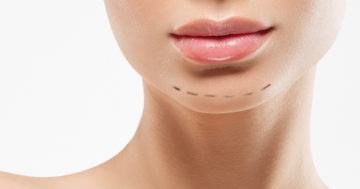Face lift
Surgical Procedure
During a facelift, the tissues under the skin are tightened and fat pads that give the face it’s shape are relocated to a higher position. This helps to create a firmer, more youthful appearance. Incisions are usually made above and across the hairline in order to diminish scarring. The incision then follows the crease in front of the ear, behind the ear, and along the lower scalp so as to make scars invisible, with fine sutures. The surgeon separates the skin from the fat and tightens the muscles beneath with dissolvable sutures, then tightens and cuts the excess skin. Excess muscle may be trimmed and excess fat may be suctioned from around the neck and chin area to improve the contour.
1 - 3 NIGHTS
2 - 10 HOURS
GEBERAL ANAESTHESIA
Pre Operative Care
 Inform your surgeon of any allergies, all medical conditions, and any medication that you are taking (both prescription and non-prescription).
Inform your surgeon of any allergies, all medical conditions, and any medication that you are taking (both prescription and non-prescription).  Avoid aspirin and brufen-containing medication for two weeks prior to surgery to eliminate the chance of post op. bleeding.
Avoid aspirin and brufen-containing medication for two weeks prior to surgery to eliminate the chance of post op. bleeding.  You should not smoke for 2 weeks prior to surgery as this may affect your reaction to the anaesthetic and prolong the healing process.
You should not smoke for 2 weeks prior to surgery as this may affect your reaction to the anaesthetic and prolong the healing process.  Patients that suffer from hypertension must inform the surgeon prior to surgery.
Patients that suffer from hypertension must inform the surgeon prior to surgery.Package Price

Post Operative Care
Following surgery, if the surgeon feels it necessary, you may have a small tube temporarily inserted under the skin behind your ear to drain any blood or excess fluid. This is usually removed a day after surgery. You may also wake with your head in bandages to minimize bruising and swelling. Loose bandages will be removed with a couple of days, but a compression garment may have to be worn for a few weeks.
It is important not to perform any strenuous activity after surgery to avoid tension on the wound, which could stretch your incisions and cause scarring. Dental work is not advised.
The recovery takes one to two weeks. Although you may have some bruising or swelling most people are happy with the result and may return to work after approximately 2 weeks.
Risks and Complications
Complications that can occur after surgery include haematoma, (blood clotting) this is rare and uncommon, yet possible. The nerves near the ears can be traumatised and you may feel numbness for some time, but this is usually temporary until the nerves mend and you will gradually obtain normal sensation, this may take up to 12 months. Other risk factors are infection and reactions to the anaesthesia. Your surgeon will give you antibiotics prior to surgery to eliminate infection. If you have any problems with anaesthetic you must inform the anaesthetist prior to surgery. Smokers may experience a delay the healing process, but ultimately still obtain the same results.
Results
Facial profile looks more youthful and fine lines are less transparent.



